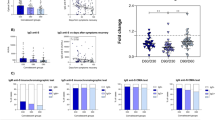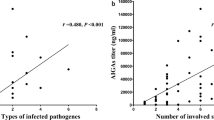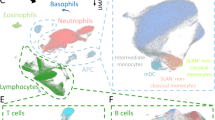Abstract
Summary: Immunologic parameters including quantitative and qualitative immunoglobulin studies, various T cell functions and neutrophil chemotaxis were evaluated in two patients with the Hyper-IgE syndrome. Both exhibited pruritic dermatitis in locations atypical for atopic dermatitis, marked elevations in serum IgE levels (to 40,000 IU/ml), recurrent staphylococcal abscesses, coarse facial features and variable chemotactic defects characteristic of this syndrome. Both patients responded favorably to courses of trimethoprim-sulfamethoxazole, particularly in helping control the cutaneous infections. We believe that this is a useful therapeutic alternative to anti-staphylococcal antibiotics and prophylactic treatment has permitted therapeutic response.
Serum IgG, IgG subclasses, IgM, and IgA were normal for age. Serum IgD was markedly deficient in one patient. Functional IgM was normal with positive isohemagglutinin titers. IgG poliovirus titers were present in both patients; however, tetanus titers were not detectable in either patient, despite repeated immunizations.
Despite normal E rosette numbers, subtle T cell abnormalities were noted with variable responses to both in vivo SK-SD, candida, and mumps skin tests and in vitro PHA-, Con A- tetanus-induced lymphocyte proliferation. Lymphocyte production of macrophage inhibitory factor and interferon and responsiveness in a mixed lymphocyte culture were normal in both patients. Considerable Con-A-induced suppressor cell activity was present in one patient, but diminished in the other.
In vivo chemotaxis determined by a Rebuck skin window, revealed a markedly delayed PMN migration in both patients during a time when both patients were clinically free of furunculosis or dermatitis. In vitro neutrophil chemotaxis was variable: maximally impaired in one patient during severe pneumonia and normalizing with clinical resolution; the low chemotactic activity of the second patient did not consistently correspond to the clinical state.
Both patients demonstrated high serum histamine levels of 75–100 ng/ml (normal <1 ng/ml). The neutrophils of 8 of 11 normal adults showed significantly enhanced chemotaxis (26–52%) in the presence of 107 to 104 M histamine, and comparable enhancement with the same concentrations of the H2 antagonist, cimetidine (17–38%). Both histamine and cimetidine consistently depressed chemotaxis in one patient. The other patient had enhanced chemotaxis in the presence of histamine and an inconsistent response to cimetidine. Histamine and cimetidine may affect neutrophils directly via H2 receptors, indirectly via H2 feedback inhibition of basophil histamine release or by non-H2 mechanisms.
Similar content being viewed by others
Log in or create a free account to read this content
Gain free access to this article, as well as selected content from this journal and more on nature.com
or
Author information
Authors and Affiliations
Rights and permissions
About this article
Cite this article
Soderberg-Warner, M., Rice-Mendoza, C., Mendoza, G. et al. Neutrophil and T Lymphocyte Characteristics of Two Patients with Hyper-IgE Syndrome. Pediatr Res 17, 820–824 (1983). https://doi.org/10.1203/00006450-198310000-00011
Issue date:
DOI: https://doi.org/10.1203/00006450-198310000-00011



